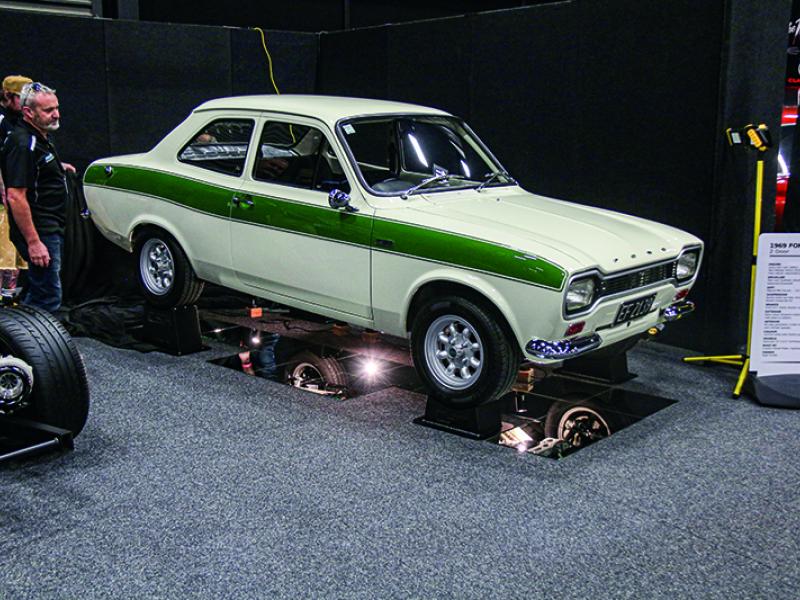This article is a true description of an AECS technical help desk problem and how it was solved. By H.P Leijen, AECS
Vehicle
2006 Mercedes Actros 3, WDB 934 EDC MR2 V8 Unit pump engine.
Problem presented to the Helpdesk
This V8 truck arrived at the workshop (which owns AECS diagnostic equipment) running on four cylinders.
The diagnostician used the Jaltest truck scan tool as the check engine light was on, with the fault codes indicating that the injection system on cylinders 2, 4, 5, 6 was faulty.
By clicking on the fault code “unit injector 6” the wiring diagram in Photo 1 appeared on the scan tool’s laptop with the offending solenoid valve highlighted (CY11).
By clicking on the injector a picture pops up with the component and its location highlighted.
Clicking on that picture brings up an in-depth description of the component with its measuring data.
The injection system used in this engine is a unit pump system. The camshaft pushes a plunger in a single plunger diesel injection pump. The plunger pressurises diesel, which gets pumped to only one injector fitted in the cylinder head. On the side of each pump is a high current solenoid valve, which is activated by the ECU and controls the fuel quantity to the injectors.
What shall we do?
Replace or measure
Four pump units failing at the same time? That is only theoretically possible, I am sure everyone agrees with that. It is time to measure. It’s worth it as new pump units are not cheap. Replacing all four units is just irresponsible.
The Jaltest data sheet states that the coil of the pump should be 0.6 Ohm. The resistance was checked on the faulty and good valves. All resistances were the same.
Scope time
Let’s look with a scope at the injector patterns on a non-working cylinder and an operational Cylinder, and compare the two.
On injector no.1, Channel 1, the power supply to the injector switches up nice and sharp as soon as the valve needs to be activated. On Channel 2 the current through the 0.6 Ohm valve gets up very high very soon, so current limiting (fast switching) sets in almost immediately.
In the recording on injector no. 4 it can be seen that the power supply does not switch up to full system voltage, and that the current control side does not start controlling the current by fast switching immediately. The injection duration is also much shorter (660usec) on the faulty injector no.4, while injector no.1 had 1.87msec injection duration.
What is common on the 4 faulty pump unit solenoids?
Let’s look at the Jaltest wiring diagram again. CY10 (cyl5), CY7 (cyl2), CY9 (cyl4), CY11 (cyl6) all share the same power supply, linking back to the ECU pin 9. This immediately made the power supply coming from the ECU suspect.
Since ECUs hardly ever fail we asked the diagnostician to record with the scope the two separate power supplies to the ECU and see if they were collapsing under the load of the injectors 5,2,4,and 6. The power supplies to the ECU were perfectly flat lining.
We asked the diagnostician to jump a new wire from the ECU pin 9 to one of the faulting pump coils, while all other coils were disconnected.
This jumper wire made no difference, the pattern was still as bad as it was before.
As a last test, before we would condemn the ECU, we asked the diagnostician to disconnect a bad coil and jump the wiring from the bad coil’s connector to a good coil. The good injector would now also not produce a proper signal, making the engine run on three cylinders out of eight.
ECU
It is time to have the ECU repaired at or replaced, without a shadow of doubt.
After a discussion with the owner it was decided to send the ECU away for repair. A faulty power supply switch was found inside the ECU, and replaced.
The ECU was plugged in and the truck was on the road about one hour later. The repaired ECU did not needed any coding with the Jaltest scanner, saving time. It did need to have all fault codes, introduced and relevant, reset.
Conclusion
Hind sight is a beautiful thing, but should we have gone for the ECU straight away? Or should we simply have followed the codes and replaced the four pump units? ECUs fail seldom so that should really be a last resort.
The equipment this workshop has (Jaltest truck scantool and ATS 500XM scope) enabled the diagnostician to prove without doubt that the fault was in the ECU, before the ECU was pulled out. Imagine how you would feel, faced with “is it the ECU or have I missed something”.
Also this case proved that sometimes ECUs do fail, despite us telling you in training that they seldom fail.
Please select your equipment, and technical support provider carefully. There are many equipment providers, but can they really assist you comprehensively when the going gets tough?






